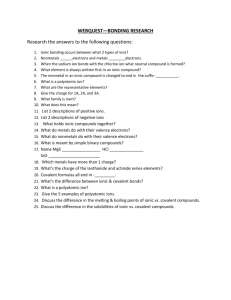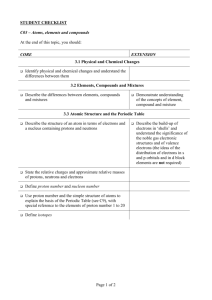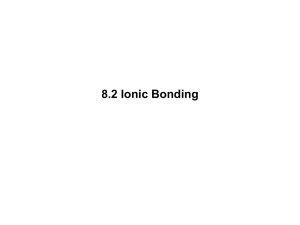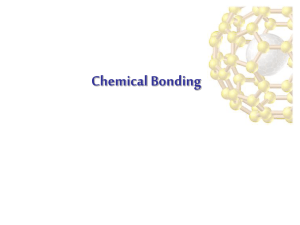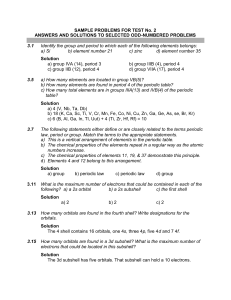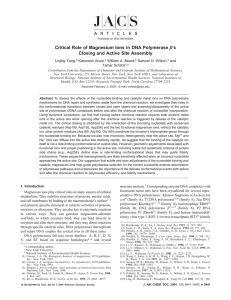6. Water
advertisement
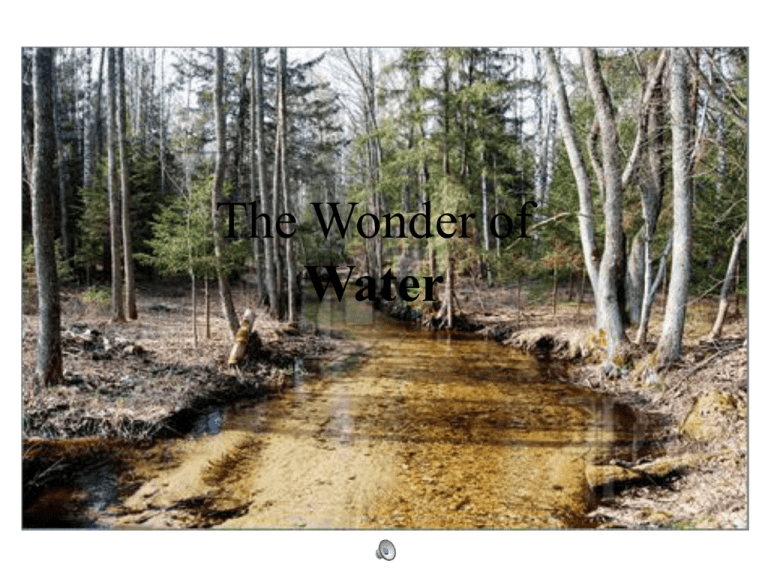
The Wonder of Water Distribution of Water on Earth Sources of Drinking Water 37% US: 63% 21% Virginia: 79% EPA Public Water System Inventory, FY2000 groundwater surface water What Water Do You Drink? http://www.epa.gov/safewater/dwh/who.html Water and Heat • Specific heat: 1 calorie = energy to heat 1 gram of water by 1o C = 4.184 J/g oC • Heat of fusion: heat that must be absorbed to cause melting = 331 J/g for H2O • Heat of vaporization: heat that must be absorbed to change liquid into vapor = 2250 J/g for H2O Electronegativity • measure of an atom’s attraction for electrons in bonds O atom is more electronegative than H atom… …so the “shared” electrons tend to hang out there! Charge Density Model of Water Molecule • Since water is bent, this means that one “end” is more negative, and the other more positive. • That is, water is polar. • This in turn makes water molecules bond to each other in a very special way. QuickTime™ and a decompressor are needed to see this picture. Structure of Ice Lots of open spaces!! (decrease density) ↑ ~4 ºC Natural Phenomenon: Lake Turnover Water as a Solvent • solvent = a substance that dissolves other substances • solute = substance that is dissolved • solution = a homogenous mixture (if water is the solvent, it’s called an aqueous solution) • electrolytes = solutes that conduct electricity Solute Concentration in Aqueous Solutions • percent • ppm and ppb • molarity (moles/L) Example: Calculating ppm If 1 liter of seawater contains 35 grams of dissolved NaCl, what is the concentration of NaCl in ppm? Density of water is 1g/ml, or 1000g/L (35 g/L)*(1000 mg/1 g)*(1 L/106 mg) = 35,000 mg/106 mg 35,000 mg/106 mg = 35,000 ppm In moles/liter? (35 g/L)*(1 mole/58.4 g) = 0.60 M NaCl Ionic vs. Covalent Compounds • ions = charged atoms or molecules (e.g. Na+) • ionic compounds = solid crystalline substances made of anions and cations (e.g. table salt) • polar compounds = contain covalent bonds with electrons that are not shared equally (e.g. water) Ionic or Covalent? • Well, a little of both… • The more electronegativity in the compound, the more likely the compound will dissociate into separate ions • I.e. one atom “borrows” one or more electrons from the other • Even water dissociates this way - there is a percentage of H+ and OH- ions in every glass of water you drink. Sodium Chloride Dissolving in Water Predicting Charge on Ions (Hint: Look at valence electrons…) Na Na+ Cl Cl- Mg Mg2+ Li Li+ O O2- Al Al3+ Polyatomic Ions Formulae for Ionic Compounds Mg + O Mg2+ & O2- → MgO Mg + Cl Mg2+ & 2(Cl-) → MgCl2 Al + O 2(Al3+) & 3(O2-) → Al2O3 magnesium sulfate Mg2+ & SO42- → MgSO4 calcium phosphate 3(Ca2+) & 2(PO43-) → Ca3(PO4)2

